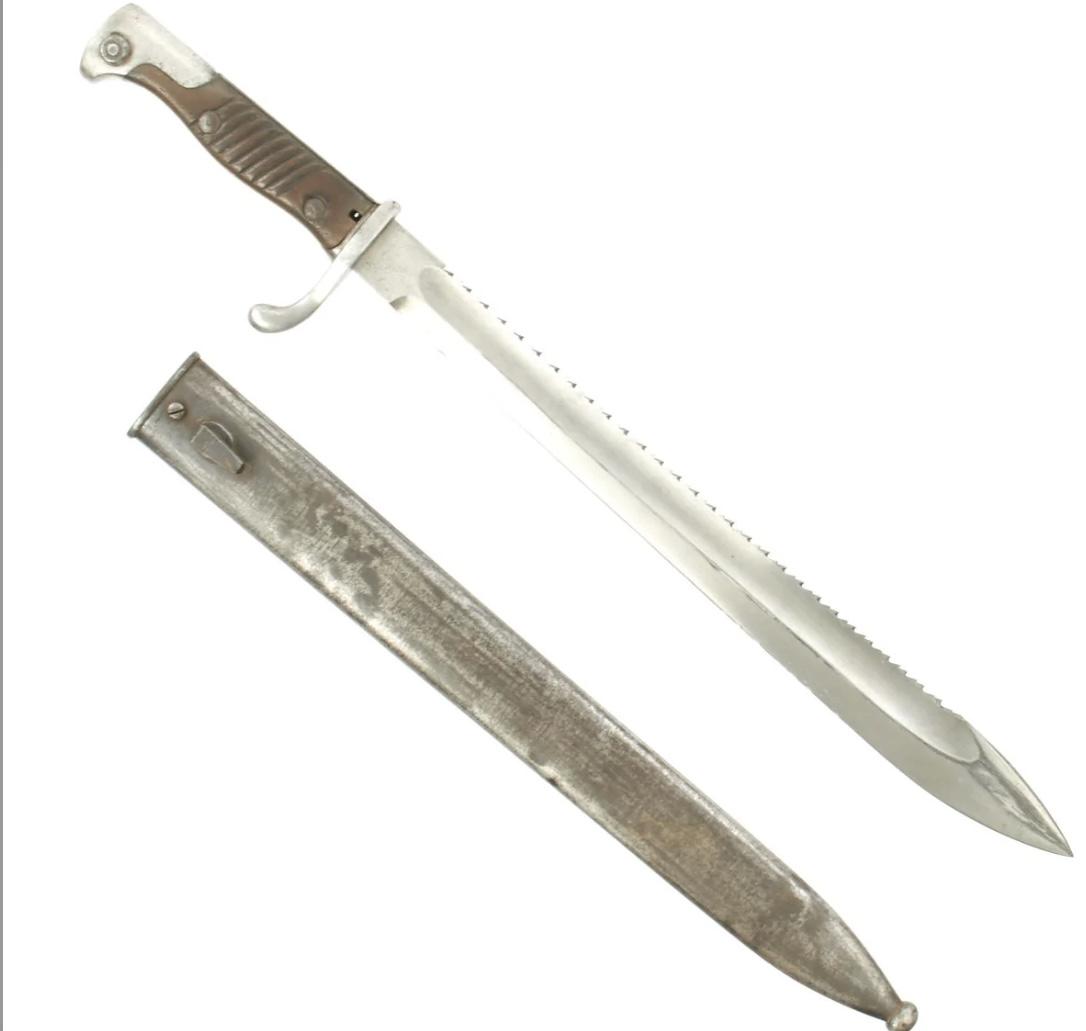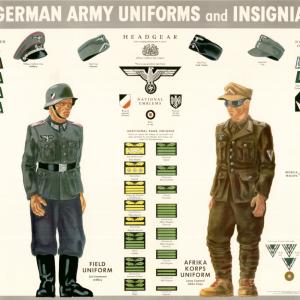
German sawback Baynet
The German sawback bayonet, introduced in the late 19th century, became one of the most controversial weapons of World War I. Designed initially for practical purposes, it quickly gained a reputation far beyond its original intent. Officially referred to as the "Sägenbajonett" in German military terminology, the sawback bayonet was a modification of standard infantry bayonets. Its most notable feature was a serrated edge on the spine of the blade, resembling a saw. This was not intended as a tool for cruelty but rather served a functional role for certain soldiers, particularly combat engineers and pioneer troops. These units often had to cut wood, clear brush, and perform other tasks in the field where a sawing edge would be advantageous.
The bayonet first appeared around 1871 and was later adapted to fit various rifle models such as the M1871/84, M1898, and the M98/05. Its blade typically featured deep, aggressive teeth and was often longer and heavier than the standard bayonets carried by regular infantry. The German Army commissioned production from several prominent manufacturers in Solingen, a city renowned for its blade-making industry. Among the key firms involved were Weyersberg, Kirschbaum & Cie (WKC), E. & F. Hörster, Alex Coppel (A.C.S.), V.C. Schilling, and Simson & Co. These manufacturers adhered to strict military guidelines and marked their bayonets with identifying stamps that included imperial insignia, maker logos, and regimental numbers.
With the outbreak of World War I in 1914, German troops entered combat equipped with a variety of bayonets, including the sawback model. While it retained its practical uses for engineers, its presence on the battlefield provoked alarm and horror among Allied soldiers. The sight of the jagged back edge led to widespread belief that the weapon was designed to inflict maximum pain and suffering. Although historians have since argued that the sawback did not necessarily cause more grievous wounds than a regular bayonet, the perception among Allied forces was one of deliberate barbarity.
Stories quickly spread among the Allied ranks about the brutality of sawback bayonets. Some claimed they caused wounds that were difficult to treat or close, leading to infection and extended suffering. These accounts were often sensationalized in Allied propaganda, which used the sawback bayonet as a symbol of German cruelty. The reaction among front-line troops was visceral. Anecdotes emerged that Allied soldiers had issued threats to execute or severely punish any German captured carrying a sawback bayonet. In some documented cases, these threats were carried out. The weapon had become so feared and hated that its very presence could endanger the soldier carrying it.
This led to a swift response from the German High Command. By 1917, an official directive was issued to grind the saw teeth off existing bayonets or remove the weapons from active service altogether. Many surviving sawback bayonets from this period show evidence of having had the teeth ground down, while others were replaced with standard straight-edged bayonets. The move was both tactical and political, aimed at preserving the safety of German troops and countering the negative image the weapon had created.
Though originally designed for practical use, the sawback bayonet became infamous as a symbol of unnecessary cruelty. This transformation was driven by both its aggressive appearance and the psychological impact it had on enemy troops. Its large, toothed spine looked more like a weapon of torture than a military tool. The wounds it inflicted were assumed to be worse than those caused by regular blades, even though no conclusive medical evidence supported that belief. Its reputation was amplified by Allied propaganda, which sought to depict the German military as inhumane.
The legacy of the sawback bayonet remains tied to the intense emotions and brutal conditions of trench warfare. While German engineers and troops may have viewed it as a useful multipurpose tool, the enemy saw something far more terrifying. It serves as a reminder of how quickly the utility of a weapon can be overshadowed by its symbolic power on the battlefield. After the war, many sawback bayonets were destroyed or had their teeth removed to distance them from their controversial past. Those that survived, especially unaltered examples, became valuable collector's items, studied not just for their craftsmanship but also for the story they represent.
Today, the German sawback bayonet is remembered as one of the most controversial military blades of the early 20th century. It demonstrates how design intentions can be misinterpreted or politicized during wartime, and how the tools of war can take on meanings far beyond their functional roles. What began as a utilitarian addition to the soldier’s kit ended up being banned, vilified, and feared, reflecting the harsh psychological and symbolic dimensions of modern warfare.










